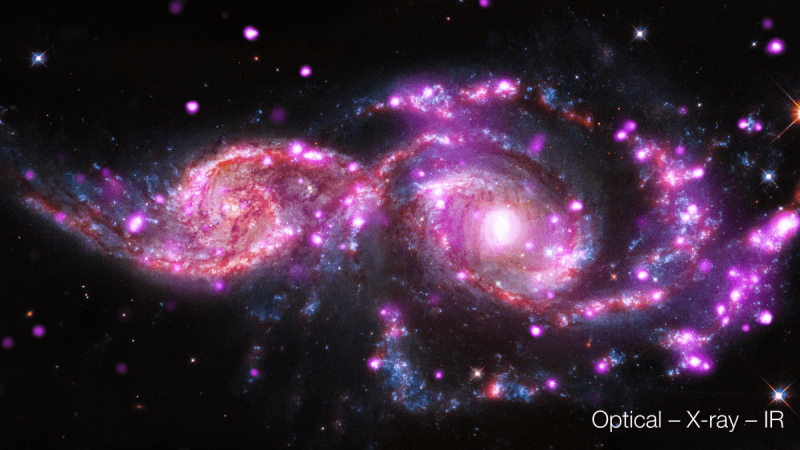
Right now, there are 2 galaxies merging and falling into each other about 80 million light-years away and the Hubble Space Telescope has front row seats to the action. The NASA operated telescope has released footage of this merger.
The two spiral galaxies, collectively called NGC2207 is particularly striking because of the way they look- like a pair of bright eyes. Invisible light, trails of stars and gasses resemble arms stretched out in a spiral owing to the heavy tidal pull present between galaxies, reports the HubbleSite.
Seen in infrared (IR) by the Spitzer instruments, there is a visible glow of the warm galactic dust as well. It is this stardust that serves as raw materials for planet and star creation.
When seen in X-ray wavelengths by Chandra, areas of active star formation and the birth of superclusters are also seen. While the stars will not actually crash into each over the millions of years that this merger will take because of the how far apart they are, the report explains that the material between the stars is likely to merge, forming intense, high-density pockets of gasses. These parts will get compressed to such an extent that they will eventually collapse and "trigger a firestorm of star birth." Regions like this are often called stellar nurseries where a large number of stars are birthed at once.
After millions of years, the 2 galaxies will completely merge with each other. The resulting galaxy will be a completely new one, notes the report. Its shape and makeup will also be different.
Galaxies regularly merge into each other, in fact, right now, the Milky Way is moving toward Andromeda and will eventually merge into one giant, dense galaxy. While that could take an estimated 4 billion years to complete and by that time, Earth as a planet is unlikely to exist. The resulting galaxy will eject several stars while also giving birth to some others. The Sun will most likely be pulled into a whole new orbit which could drag the Earth away along with it, notes a report by Business Insider.

















